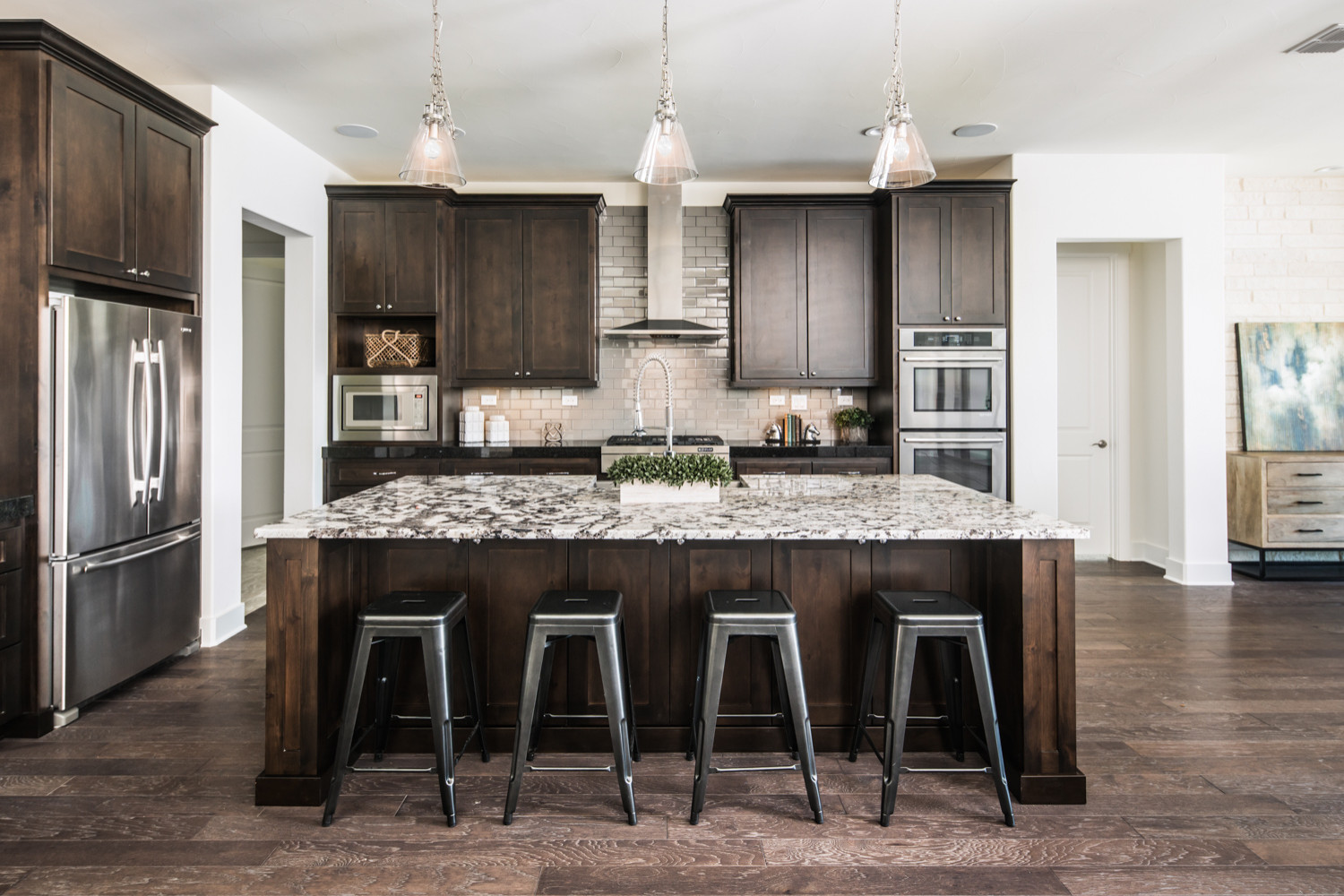Practical Considerations for Backsplash Selection: Light Brown Cabinets Backsplash

Choosing the right backsplash for your kitchen with light brown cabinets is a crucial decision that impacts both aesthetics and functionality. It’s essential to consider various factors, including material, durability, maintenance, and cost, to make an informed choice that complements your existing décor and serves your needs for years to come.
Backsplash Material Benefits and Drawbacks, Light brown cabinets backsplash
The backsplash material plays a significant role in the overall look and feel of your kitchen. It’s important to weigh the benefits and drawbacks of different options to determine the best fit for your space.
- Tile: Tile is a popular backsplash choice due to its versatility, durability, and affordability. Ceramic tile is a budget-friendly option, while porcelain tile offers greater durability and water resistance. However, grout lines require regular cleaning to prevent staining and mildew growth.
- Natural Stone: Natural stone, such as granite, marble, or slate, adds elegance and sophistication to any kitchen. It’s highly durable and resistant to heat and scratches. However, natural stone can be porous and susceptible to staining, requiring sealing and regular maintenance. It’s also one of the more expensive backsplash options.
- Glass: Glass backsplashes are known for their sleek and modern appearance. They are easy to clean and resistant to stains and scratches. However, glass can be more prone to chipping and breaking, especially in high-traffic areas.
- Metal: Metal backsplashes, such as stainless steel or copper, offer a contemporary and industrial look. They are durable and easy to clean but can be prone to scratches and dents.
- Acrylic: Acrylic backsplashes are budget-friendly and offer a smooth, non-porous surface that is easy to clean. However, they are not as durable as other materials and may scratch easily.
Backsplash Installation and Maintenance Tips
Proper installation and maintenance are crucial for maximizing the lifespan and aesthetic appeal of your backsplash. Here are some practical tips:
- Professional Installation: For most backsplash materials, it’s highly recommended to hire a professional installer to ensure proper alignment, sealing, and grout application.
- Regular Cleaning: Regularly clean your backsplash with a mild detergent and warm water to prevent dirt and grime buildup. For natural stone, use a sealant-specific cleaner to protect the surface.
- Grout Sealing: Seal grout lines regularly to prevent staining and mildew growth. Use a grout sealer specifically designed for your backsplash material.
- Avoid Harsh Chemicals: Avoid using harsh chemicals or abrasive cleaners that can damage the backsplash surface.
Choosing a Backsplash that Complements Existing Surfaces
The backsplash should complement the existing countertop and flooring to create a cohesive and harmonious look.
- Color Palette: Consider the color palette of your countertop and flooring when selecting a backsplash. A contrasting color can create a bold statement, while a similar shade can create a more subtle and unified look.
- Material Texture: Match the texture of the backsplash to the countertop and flooring. For example, a smooth countertop may pair well with a textured backsplash, while a textured countertop might look better with a smooth backsplash.
- Pattern and Design: Consider the patterns and designs of the countertop and flooring when choosing a backsplash. A busy countertop may benefit from a simpler backsplash, while a plain countertop can handle a more intricate backsplash design.
Choosing the Right Grout Color
The grout color can significantly impact the overall aesthetic of the backsplash.
- Matching Grout: For a seamless look, choose grout that closely matches the color of the tile. This creates a minimalist and unified appearance.
- Contrasting Grout: For a bolder look, choose grout that contrasts with the tile color. This can highlight the tile’s pattern and add visual interest.
- Light Brown Cabinets: With light brown cabinets, consider using a grout color that complements the warmth of the wood. Light gray, beige, or even a light brown grout can enhance the overall look.
